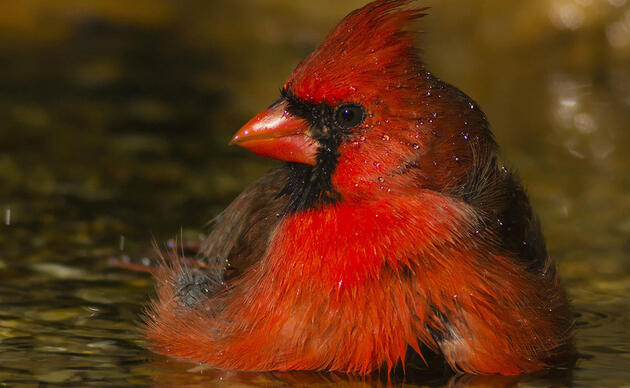As the wet season is wrapping up, we are breathing a sigh of relief for the birds and wildlife in Lake Okeechobee and the St. Lucie and Caloosahatchee estuary ecosystems. Due to thoughtful water level management amongst the state and federal agencies this season, (and just the right amount of rain), our ecosystems are in a solid place as we enter the winter months.
During the wet season between May and October, Lake Okeechobee received slightly more than average rain. Thanks to new management approaches and patience from the agencies, there were minimal summer discharges from the Lake to the St. Lucie, and mostly beneficial releases to Caloosahatchee Estuaries, allowing these delicate ecosystems to continue to recover from the devastation from last summer. Lake Okeechobee’s levels reached 16 feet in October, which is the considered threshold for harm. But with levels now dropping, lake levels are within the ideal zone for the end of the rainy season.
Lake Okeechobee’s ideal water level range is between 12.5 to 15.5 feet over the course of the year. If the Lake is over 16 feet for too long, damage to the marsh occurs. The 50,000‐acre submerged marsh community is in deep enough water that plants begin dying from wave action and from the loss of light in the deep, turbid, water. Prolonged deep water eliminates the wildlife rich wet prairie communities from the Lake, areas needed to support wading bird foraging. Rapidly rising water can drown alligator and bird nests (including Everglade Snail Kites) across the marsh. Click here to learn more about the effect of lake levels on the wildlife of Lake Okeechobee.
Managing Lake Okeechobee’s water levels is not easy. One wet tropical storm can raise Lake levels several feet - levels harmful to the marsh and perilous for Hoover Dike safety. The Corps cannot lower the Lake as fast as it can rise so they must make proactive releases to avoid harmful levels. The management plan for the Lake allowed Lake releases to the estuaries virtually all summer, but the Corps decided to minimize releases to the estuaries. This approach prevented harmful Lake discharges. Note that the estuaries did receive some water from polluted local basin runoff, but it was not nearly as harmful as the previous year.
Very importantly, the SFWMD experimented with new operations to flow over 200,000 acre feet of water (about 5 inches of Lake level) south to the Everglades- water that otherwise would have been released to the estuaries.
The Corps and SFWMD’s approach over the summer came with some risk, but Audubon supported it based on climate patterns and lake level trends during the summer. Almost weekly, the Corps hosts “Periodic Scientist” calls to get input from scientists from myriad agencies and interests, including Audubon, on day-to-day system conditions from throughout the system. This information is then used to guide weekly decisions on Lake management.
We commend the Corps and SFWMD for innovative lake management this season and look forward to a healthy spring drawdown.
By Jane Graham
Stay in Touch!
Show your love of birds today. Subscribe to receive email updates about Audubon's conservation work and hear about opportunities to help birds in your area or nationwide.




